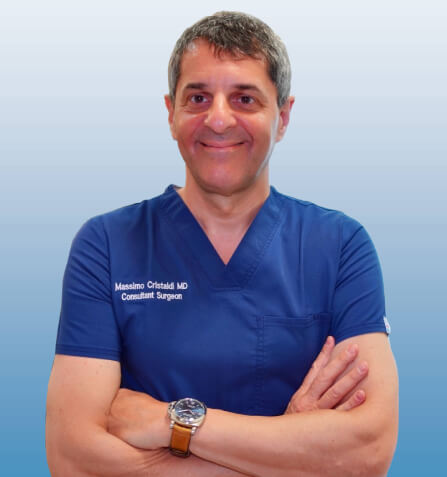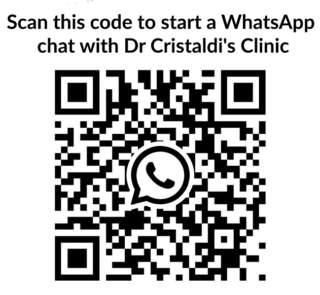HEMORRHOIDS
Piles or hemorrhoids are vascular cushion in the anal canal, which are contributing with the anal muscles, called anal sphincters, to maintain continence to stool and gas. At times and for different reasons haemorrhoids can become swollen. When veins in the lining of the anus and rectum become enlarged, they are filled with excess blood, and cause the underlying tissues to also swell, forming abnormal lumps. It occurs at any age but most commonly in individuals over 50 years of age.
Hemorrhoids are classified into two types. They include:
- Internal hemorrhoids: These are swellings that develop inside the anus. You may not be able to see or feel them. Sometimes, they may protrude through the anus to form external hemorrhoids.
- External hemorrhoids: These are swellings that develop outside the anus while passing stools. You may be able to see and feel them. Formations of blood clots in external hemorrhoids are called thrombosedhemorrhoids and are extremely painful.
Piles are caused due to excessive abdominal pressure from standing or sitting for long periods, being obese, pregnancy and straining during constipation. Diet plays an important role in causing and preventing piles. People who consume more processed food, and less fibre and fluids may develop piles as a result of producing hard stools and straining during bowel movements.
- Signs & Symptoms
- Screening & Diagnosis
- Treatment Options
Skin and soft tissue are protecting and wrapping body’s deeper structures, providing also adequate support and important functions for maintaining the skin efficient and functional. These structures are effectively a specialized organ of our body, which is differentiated in various types of cells providing different functions: some of the most important are producing hair to enhance protection and reduce friction, secreting sebous which is the natural moisturizer of the skin and sweat contributing to termo-regulation of the body. Common diseases of the skin and the underneath layer called sub-cuticular space are commonly represented by benign growth which may be moles, cysts, enlarge lymphatic nodes and in some circumstances also localized infections defined as cellulitis and abscesses. Surgery for such conditions aims to resolve the problem either through surgical removal of the growth or in case of presence abscess, to achieve local drainage of the collection in order to control and resolve the localized infection to avoid its further spreading. Diseases of nail are also very common and they are mainly represented by abnormal in-growing of the nail into the skin edge causing localized chronic infection and pain. Here is the list of the most common conditions/procedures that we routinely perform for soft tissue or skin problems.
On presenting with symptoms of piles, your doctor will conduct a thorough medical history and physical examination. Physical examination can help identify external piles that form on or around the anus. The following tests may be conducted to diagnose internal piles:
Digital rectal examination: Your doctor will insert a lubricated gloved finger into your rectum to detect abnormal growths. However, internal piles may be so small that they cannot be detected by digital rectal examination. Inform your doctor if you experience intense pain or discomfort during the procedure.
Anoscope, proctoscope, sigmoidoscope or colonoscope: These scopes are flexible lighted tubes that help your doctor to view your anus, rectum, and lower colon for abnormal lumps. Your doctor may recommend colonoscopy if you are at a high risk of developing colorectal neoplasms or are suspected to have some other disease of the digestive system.
Some other tests include:
- Biopsy: If required, a sample of tissue can be removed for analysis.
- Blood Tests: If you experience heavy bleeding, your doctor may order blood tests to evaluate red blood cell count or haemoglobin (oxygen-transporting protein in blood) levels.
Piles usually do not require treatment as they often disappear after a few days. However, discomfort and itching may be treated with various options.
1. Dietary and lifestyle modifications
If the main cause for the formation of piles is constipation, the first line of treatment usually involves softening and regularizing stools. The symptoms of piles can be relieved with dietary changes and lifestyle modifications. A high fibre diet, including fruits, vegetables, whole grain cereals and breads can help to soften stools and avoid straining. Your doctor will also advise you to increase your water consumption and exercise regularly to avoid constipation. Soaking yourself in warm water for 10 minutes several times a day may also provide relief.
2. Medications
Your doctor may suggest short-term remedies such as over-the-counter creams, ointments, or suppositories to relieve pain, swelling, inflammation and itching. Avoid using them for a longer time as they may damage the skin around your anus. Your doctor may prescribe pain killers to treat painful piles, and laxatives to soften stools and empty your bowels.
3. Minimally invasive procedures
When blood clots form in external hemorrhoids, your doctor will make a simple incision and remove the clot. Piles that are painful and bleed continuously may be treated with minimally invasive procedures. These include:
- Rubber band ligation: This procedure involves placing tight elastic rubber bands at the base of an internal pile. The bands cut off blood supply causing the piles to fall off within a week. You may experience slight bleeding after the procedure. Rubber band ligation of piles should be limited to grade 1 and grade 2 haemorrhoids which are well above the dentate line as below that line the area is very painful
- Transanal hemorrhoidal dearterialization or THD: This procedure does not deal directly with piles but instead is focused on identified the artery which is feeding the hemorrhoids and performed a precise ligation of it. The procedure is then completed with superficial continuous suturing of the lining above the hemorrhoidal tissue in order to lift the prolapsed hemorrhoidal tissue inside the anal canal. This procedure is completed under general anesthesia but is a fully day cases procedure and it does not required overnight stay. This type of procedure is also extremely well tolerated by the patient causing a minimal amount of pain that usually subsides in few days. The recovery and the time off work are also extremely limited usually within a week.
PRE/POST OPERATIVE INSTRUCTION
TRANSANAL HEMORROIDAL DEARTERIALIZATION – THD
The aim of this information sheet is to provide an answer the most frequently asked question about Anal Fissure Surgery. Additional and detailed information on the technique of this procedure can be found in the Educational Video and Presentation in the website www.colorectalclinic.ae.
Anal Fissure surgery is aimed to re-establish the conditions which lead to healing of the small mucosa tear, called fissure. Some of the procedures can be planned and done in stages and your doctor will explain how the entire sequence of surgery works and more detailed explanation can be found on the website in the Educational Video section.
The principle of Anal Fissure surgery is to re-establish the condition which favors the healing of the fissure and the resolution of the anal pain which is the main symptoms associated to Fissure. As we now know very well the main cause of primary Anal Fissure is the increase tone or spasm of the Internal Anal Sphincter, which is normally responsible for the so called resting tone responsible for one of the most important functions of anal continence. The main treatment for anal fissure is to restore a normal anal tone, decreasing the tightness of this muscle. Once this happens the fissure heals naturally. This is achieved with the injection of Botulin Toxin solution in the area of Internal Sphincter in order to decrease the tone of the muscle itself with a partial relaxation of it. An additional procedure called fissurectomy may be done in order to refresh the fissure edges in order to speed up the healing time.
FAQs
- What to expect after the procedure?
- What activity would I be able to perform immediately after surgery?
- What are the complications of this surgery?
The vast majority of the patient during the first 24 to 48 hours after surgery complains a various degree of tenesmus, which is the urge pass stool even if the need is not really due to the presence of stool in the rectal ampulla. This is due to the presence of multiple ties in the anal canal that may trigger the reflex of passing stools. This symptom generally disappears within 48 hours after surgery but in certain individuals may drag a bit longer. Significant pain is very unusual. Patient may experience small traces of blood when they pass motion and a mild laxative will be prescribed on discharge in case the patient has history of constipation. Immediately after surgery patient may have shower or bath as there are no open wound and can also enjoy light physical activity. Diet can be resumed accordingly to the patient preferences but certainly avoiding heavy meals in the immediate postoperative days. Complete operation note, Discharge summary and sick note, when required will be provided before the patient leaves the hospital.
Light physical activity can be sustained immediately after surgery and full physical activity can generally be resumed after one week. Full recovery happens usually within a week. Patients are generally able to resume work after few days although it is recommended to remain off work for one week. Sick leave will be granted accordingly.
THD is a very safe procedure as it is not associated to any open wound which requires healing time. Minor episodes of bleeding have been reported but they are generally very rare. Dr Cristaldi has been performing regularly this type of procedure since 2006, first in England where he introduced the procedure and then in the UAE where he performed the first THD done in the country in 2009. Since then he has performed more than 500 THD’s and he has been official trainer for this procedure in the Gulf region.



